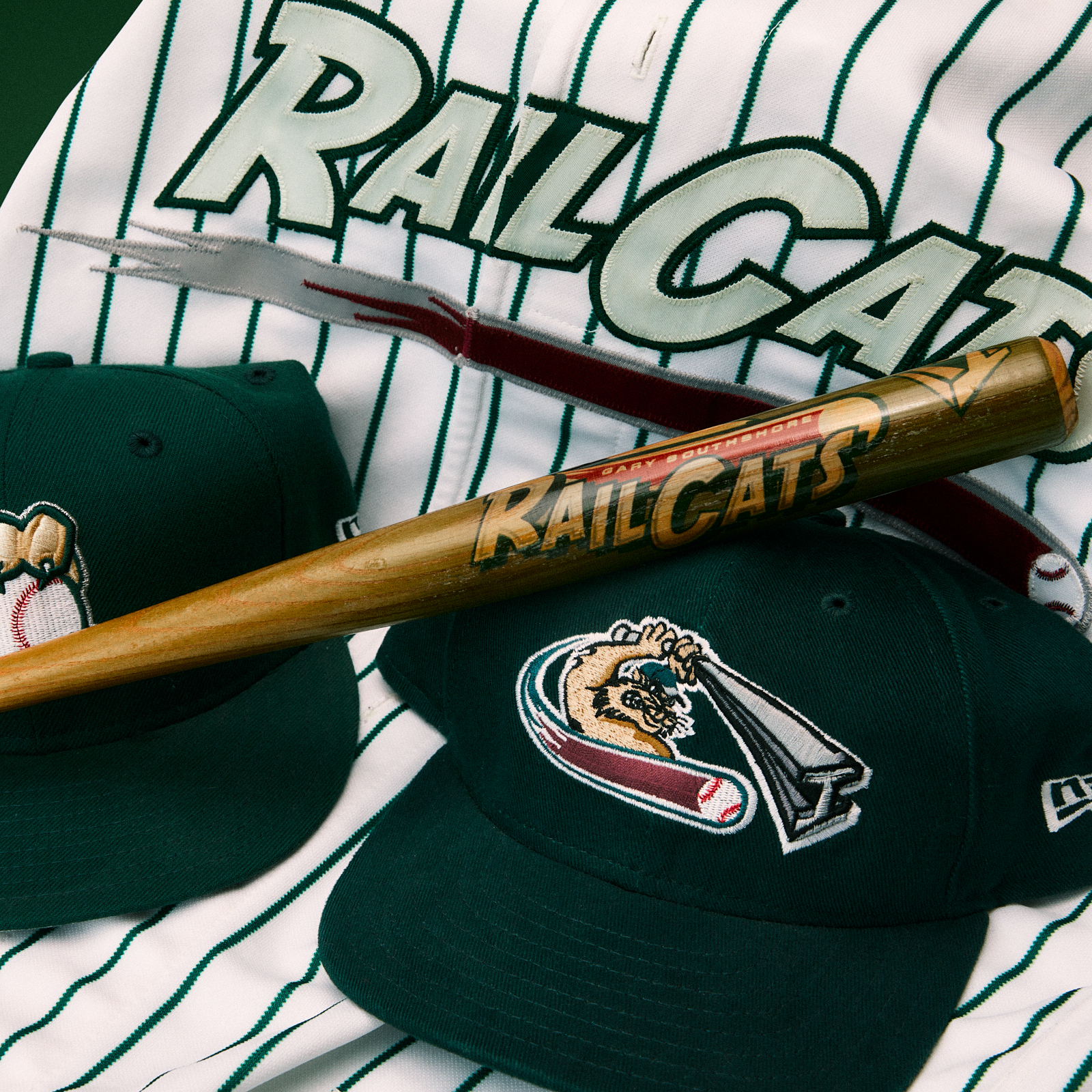
Once upon a time, reality could only be escaped by either dreams or hallucinations. Nowadays, our waking hours are invaded with a virtual reality—either literally, as in headsets that completely replace the field of view with a virtual reality; or figuratively, with a whole new world that's mediated by a screen.
The onset of digital and social media has had the side effect of making people realize the value of physicality, of materiality. Where the iPod once represented a utopia away from scratched CDs, mangled cassettes, or trying to find your favorite part of a song on a vinyl record, it also highlighted what was lost: the whirring of a CD getting up to mach speed; the hypnotizing spiral of cassette wheels; the moment that silent air transformed into music with a needle drop. In their absence, we've discovered what was lost by sanitizing the physical world into an immaterial, pristine virtual reality.
Brands, at the same time, have welcomed the creative frontiers offered by digital landscapes—with good reason. Videoconferencing has made it possible for the best talent to work together from across the world. Digital advertising has trimmed the fat from lower-funnel media. Social media has created new experiences for brands and customers alike. But its promise of more authentic communications has been been overshadowed by the pallor of parasocial relationships.
There are, fortunately, remedies against this phenomenon. In the digital space, brands can focus on their creative strengths to generate authentic connections with their customers and stakeholders. But they can also jump across the line entirely and reintegrate into the real world.
Enterprises exist to create real change in the world. Whether they offer goods or services, nothing is done without real world interaction. Understanding this, they can use objects and experiences to make their brands real.
For example, the Gary SouthShore RailCats sell an experience. Peanuts and Cracker Jack might be a core part of the fan experience, but so are the jerseys, the hats, the programs, and the kid-sized bats that inspire the next generation of sluggers. A Chicago Bulls hat is as much a statement about the City of Broad Shoulders as it is about the basketball team itself.
Brands that understand this can leverage the newfound value in real objects by making advertising that people can physically interact with. This can mean not only print media, but also merchandise that people are proud to use. It's a way to step beyond the screen and produce an experience that someone can touch and feel directly, without the intermediary of a screen or clumsy headset.
Your brand exists to make a change in the real world. It's only fitting that your marketing makes your brand real, too.

Finding new and exciting ways to physically interact with people can make your marketing an asset that gives your brand a competive advantage.

Once upon a time, reality could only be escaped by either dreams or hallucinations. Nowadays, our waking hours are invaded with a virtual reality—either literally, as in headsets that completely replace the field of view with a virtual reality; or figuratively, with a whole new world that's mediated by a screen.
The onset of digital and social media has had the side effect of making people realize the value of physicality, of materiality. Where the iPod once represented a utopia away from scratched CDs, mangled cassettes, or trying to find your favorite part of a song on a vinyl record, it also highlighted what was lost: the whirring of a CD getting up to mach speed; the hypnotizing spiral of cassette wheels; the moment that silent air transformed into music with a needle drop. In their absence, we've discovered what was lost by sanitizing the physical world into an immaterial, pristine virtual reality.
Brands, at the same time, have welcomed the creative frontiers offered by digital landscapes—with good reason. Videoconferencing has made it possible for the best talent to work together from across the world. Digital advertising has trimmed the fat from lower-funnel media. Social media has created new experiences for brands and customers alike. But its promise of more authentic communications has been been overshadowed by the pallor of parasocial relationships.
There are, fortunately, remedies against this phenomenon. In the digital space, brands can focus on their creative strengths to generate authentic connections with their customers and stakeholders. But they can also jump across the line entirely and reintegrate into the real world.
Enterprises exist to create real change in the world. Whether they offer goods or services, nothing is done without real world interaction. Understanding this, they can use objects and experiences to make their brands real.
For example, the Gary SouthShore RailCats sell an experience. Peanuts and Cracker Jack might be a core part of the fan experience, but so are the jerseys, the hats, the programs, and the kid-sized bats that inspire the next generation of sluggers. A Chicago Bulls hat is as much a statement about the City of Broad Shoulders as it is about the basketball team itself.
Brands that understand this can leverage the newfound value in real objects by making advertising that people can physically interact with. This can mean not only print media, but also merchandise that people are proud to use. It's a way to step beyond the screen and produce an experience that someone can touch and feel directly, without the intermediary of a screen or clumsy headset.
Your brand exists to make a change in the real world. It's only fitting that your marketing makes your brand real, too.
Finding new and exciting ways to physically interact with people can make your marketing an asset that gives your brand a competive advantage.


Once upon a time, reality could only be escaped by either dreams or hallucinations. Nowadays, our waking hours are invaded with a virtual reality—either literally, as in headsets that completely replace the field of view with a virtual reality; or figuratively, with a whole new world that's mediated by a screen.
The onset of digital and social media has had the side effect of making people realize the value of physicality, of materiality. Where the iPod once represented a utopia away from scratched CDs, mangled cassettes, or trying to find your favorite part of a song on a vinyl record, it also highlighted what was lost: the whirring of a CD getting up to mach speed; the hypnotizing spiral of cassette wheels; the moment that silent air transformed into music with a needle drop. In their absence, we've discovered what was lost by sanitizing the physical world into an immaterial, pristine virtual reality.
Brands, at the same time, have welcomed the creative frontiers offered by digital landscapes—with good reason. Videoconferencing has made it possible for the best talent to work together from across the world. Digital advertising has trimmed the fat from lower-funnel media. Social media has created new experiences for brands and customers alike. But its promise of more authentic communications has been been overshadowed by the pallor of parasocial relationships.
There are, fortunately, remedies against this phenomenon. In the digital space, brands can focus on their creative strengths to generate authentic connections with their customers and stakeholders. But they can also jump across the line entirely and reintegrate into the real world.
Enterprises exist to create real change in the world. Whether they offer goods or services, nothing is done without real world interaction. Understanding this, they can use objects and experiences to make their brands real.
For example, the Gary SouthShore RailCats sell an experience. Peanuts and Cracker Jack might be a core part of the fan experience, but so are the jerseys, the hats, the programs, and the kid-sized bats that inspire the next generation of sluggers. A Chicago Bulls hat is as much a statement about the City of Broad Shoulders as it is about the basketball team itself.
Brands that understand this can leverage the newfound value in real objects by making advertising that people can physically interact with. This can mean not only print media, but also merchandise that people are proud to use. It's a way to step beyond the screen and produce an experience that someone can touch and feel directly, without the intermediary of a screen or clumsy headset.
Your brand exists to make a change in the real world. It's only fitting that your marketing makes your brand real, too.
Finding new and exciting ways to physically interact with people can make your marketing an asset that gives your brand a competive advantage.